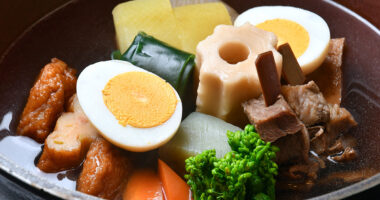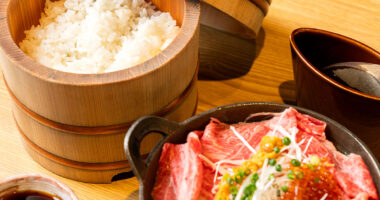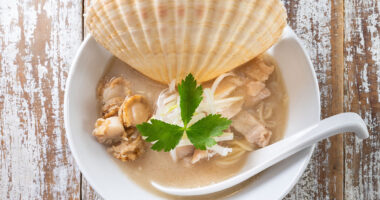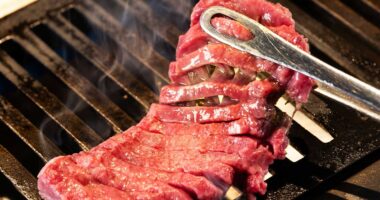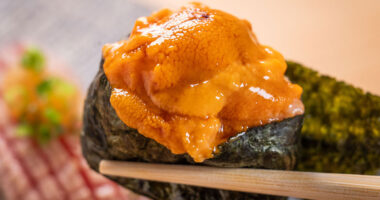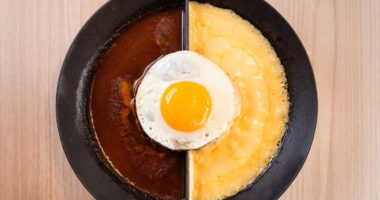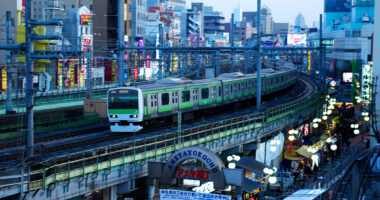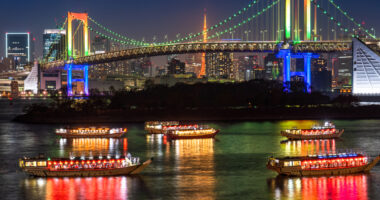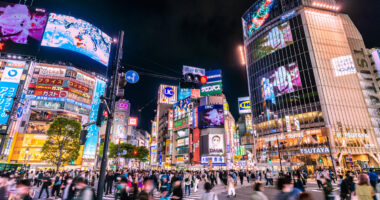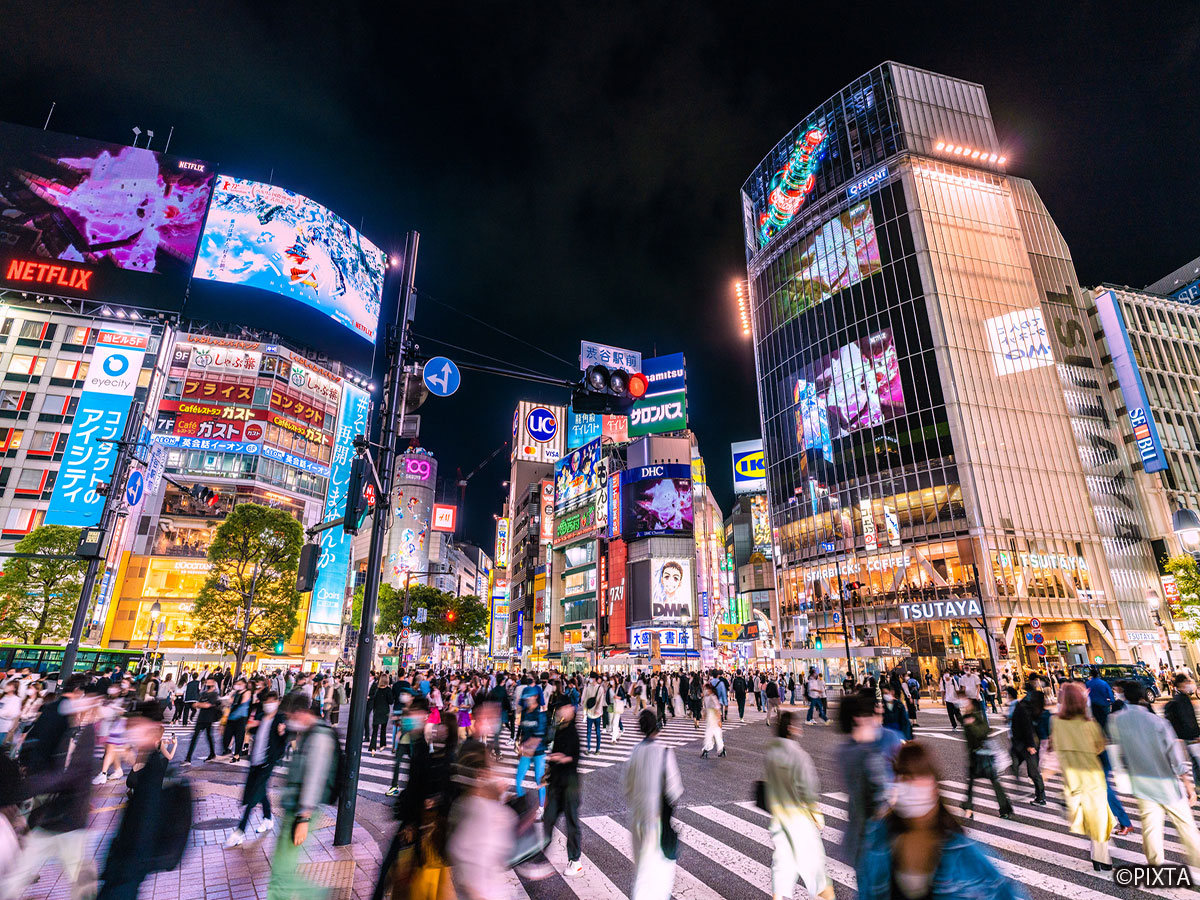Situated in the bustling Shibuya district of Tokyo, “Nihonrettōsakaba KAMIGOTO” serves up specialties from Kamigotō, a town in the northern part of the Gotō Islands in Nagasaki Prefecture. The restaurant prides itself on a variety of dishes using fresh seafood and local delicacies, directly sourced from Kamigotō. The nihonrettō in their name means “Japanese archipelago.” As for sakaba, it literally means “tavern,” although it often denotes a restaurant which prides itself on its alcohol selection.
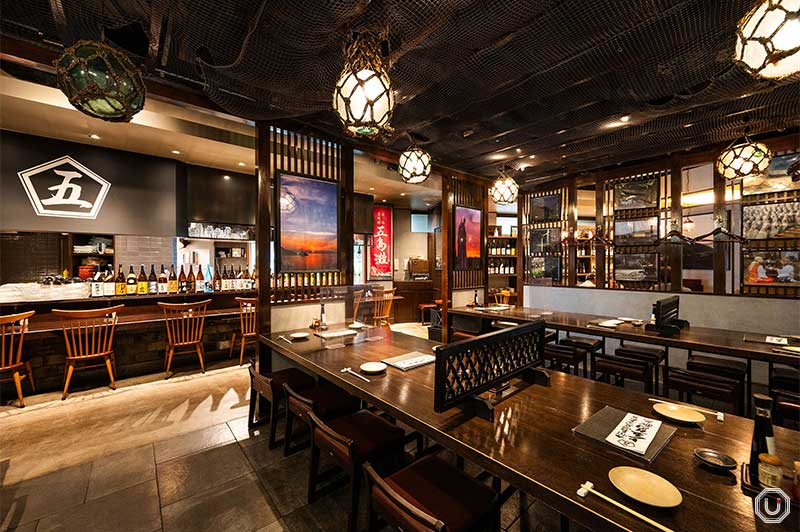
Feast on the “Gottsu-Don Seafood Bowl,” a Kamigotō specialty
A star dish of the restaurant, available for both lunch and dinner, is the “Gottsu-Don Seafood Bowl.” In Nagasaki dialect, gottsu means a feast. True to its name, this bowl is lavishly topped with seven types of seasonal seafood caught in the Gotō Islands.
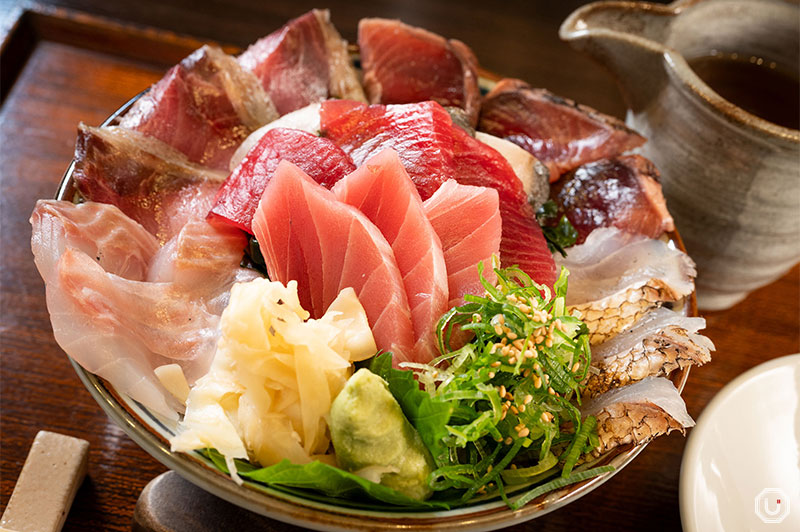
“海鮮ごっつ丼(特上),” Gottsu-Don Seafood Bowl (Deluxe) 3,800 JPY (tax included)
The seafood toppings on the Gottsu-Don change weekly. On the day of our visit, the bowl was generously filled with medium fatty tuna, lean tuna, Spanish mackerel, sea bream, bonito, yellowtail, and flounder. Each slice of sashimi is pre-marinated in a soy sauce blended with ago-dashi, a broth featuring extracts of ago, or flying fish. Therefore, it’s best enjoyed as is. Adding wasabi or other condiments is also recommended.
You can use the bowl’s lid as a small plate, enjoying the dish like a sashimi set meal.
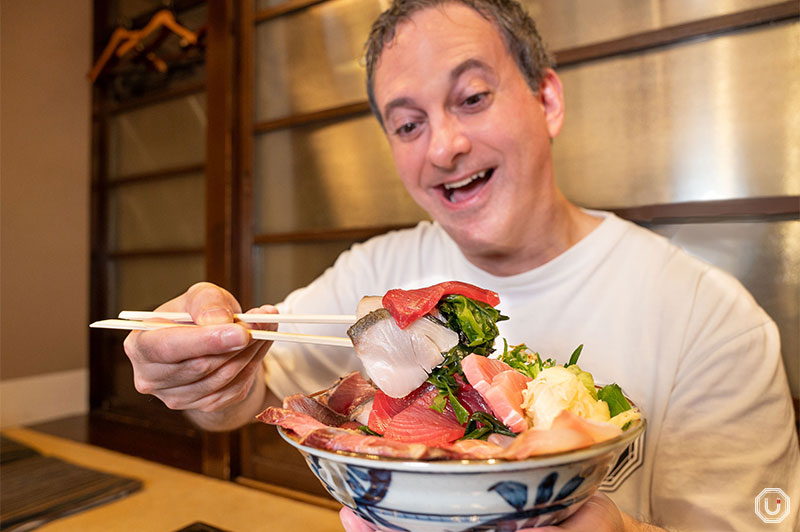
Midway through your meal, pour hot ago-dashi over the bowl to transform it into a delightful ochazuke rice soup. The slight warmth gently cooks the sashimi, offering a new flavor and texture.
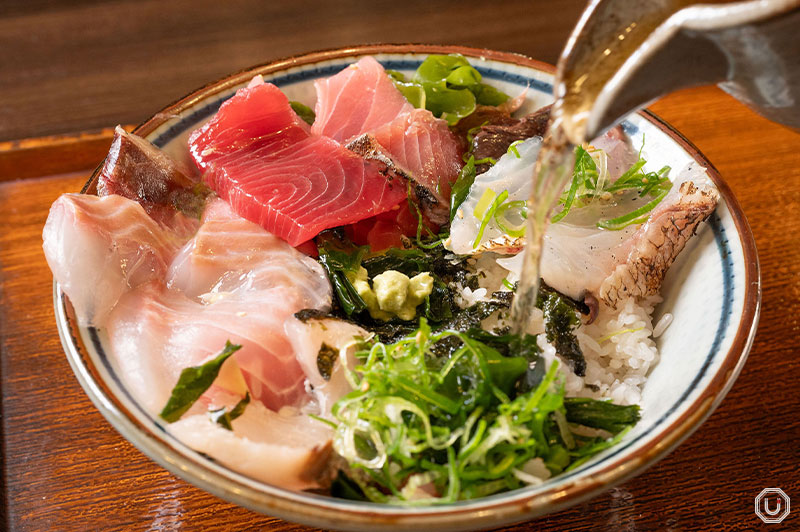
Savor Kintaro tuna from the Gotō Islands, delicious in a spicy “Kintaro Tuna Yukhoe”
Most of the tuna used by Nihonrettōsakaba KAMIGOTO in their delicious seafood dishes such as the Gottsu-Don Seafood Bowl comes from Kintaro tuna, mainly sourced from the waters around the Gotō Islands and known for its sweetness and rich flavor.
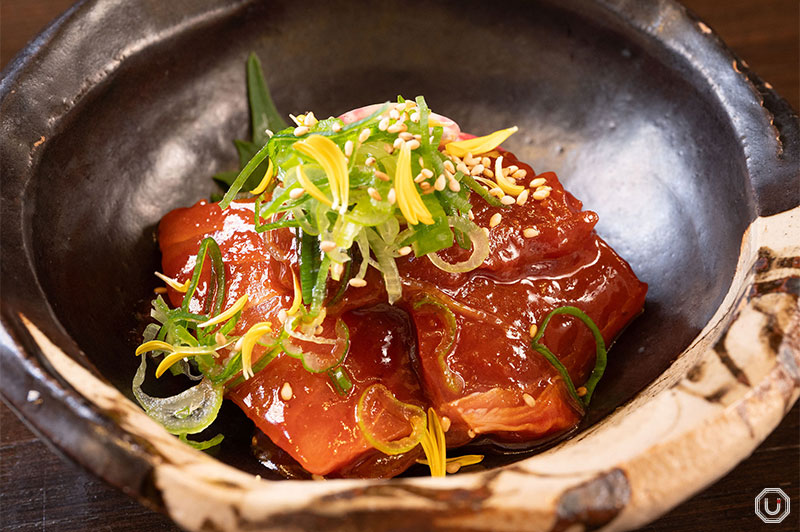
“金太郎まぐろユッケ,” Kintaro Tuna Yukhoe 980 JPY (tax included)
Kintaro tuna thrives in the strong currents between the Kuroshio and Tsushima currents around the islands, making it particularly tasty.
The name Kintaro is inspired by a traditional Japanese candy called kintarō-ame which has the same pattern no matter where in the roll you cut it. Likewise, this high-quality tuna is said to yield delicious cuts no matter which part of the fish you take it from.
Among the various dishes made with Kintaro tuna, their “Kintaro Tuna Yukhoe” is a perfect accompaniment to alcohol.
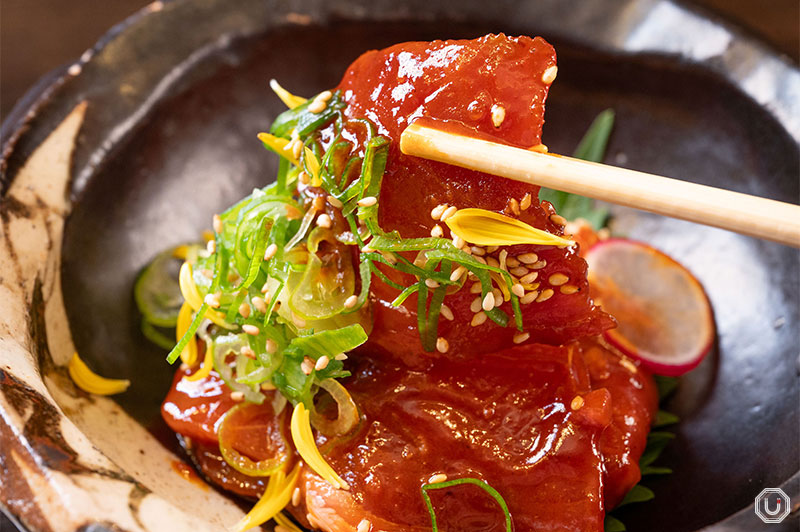
The spicy sauce in the Kintaro Tuna Yukhoe enhances the sweetness and umami of the tuna, making it irresistible with a drink. The restaurant also offers a selection of sweet potato shōchū from the Gotō Islands, such as Gotō Nada Beni Satsuma and Gotō Nada Shiro Kōji. Why not order some along with your meal?

Kamigotō’s hellishly delicious jigoku-daki udon, a local delicacy
In Kamigotō jigoku-daki udon is a local specialty featuring udon, thick wheat flour noodles. This name originated from a whimsical language mix-up in which shigoku, meaning “extremely,” was misheard as jigoku, meaning “hell.” The name stuck, and the result was “hellishly delicious” udon noodles! The dish, with its captivating name, has become a popular choice among the restaurant’s guests.
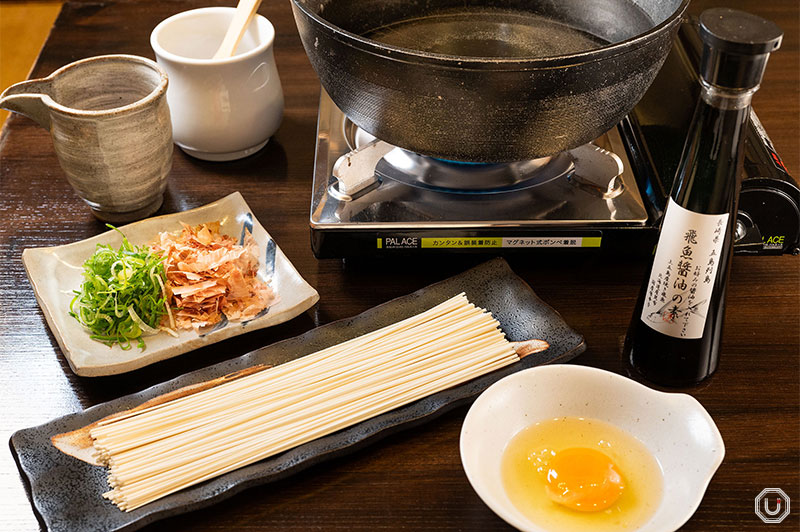
“名物 地獄炊きうどん(定番),” Signature Jigoku-Daki Udon (Plain) 980 JPY (tax included)
You cook their “Signature Jigoku-Daki Udon” by yourself at the table. It’s simple: once the water boils, add the dried noodles and wait for about 7 minutes.
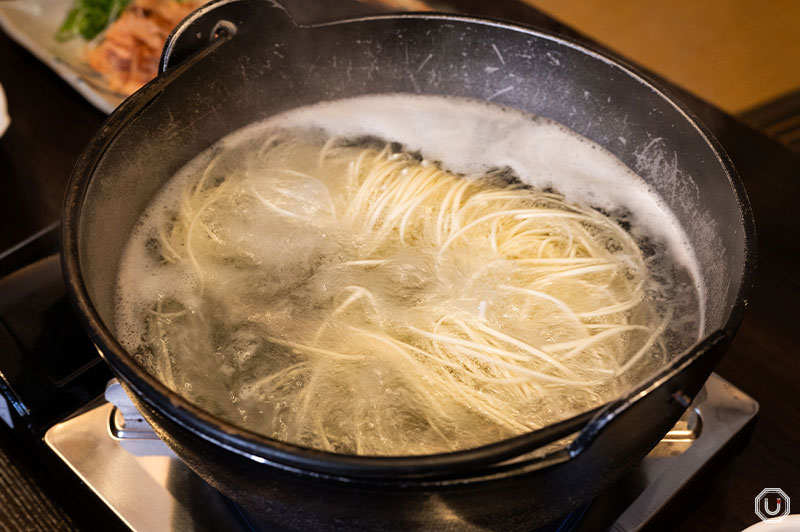
Once cooked, use the provided cooking chopsticks or the noodle strainer to lift the noodles, and then dip them in a special sauce made with soy sauce and a raw egg. You can also try it with ago-dashi for a different flavor. Adding green onions or bonito flakes is optional. While ginger is typically also used in jigoku-daki udon, Nihonrettōsakaba KAMIGOTO chooses to highlight the broth’s natural flavor by offering only green onions and bonito flakes.
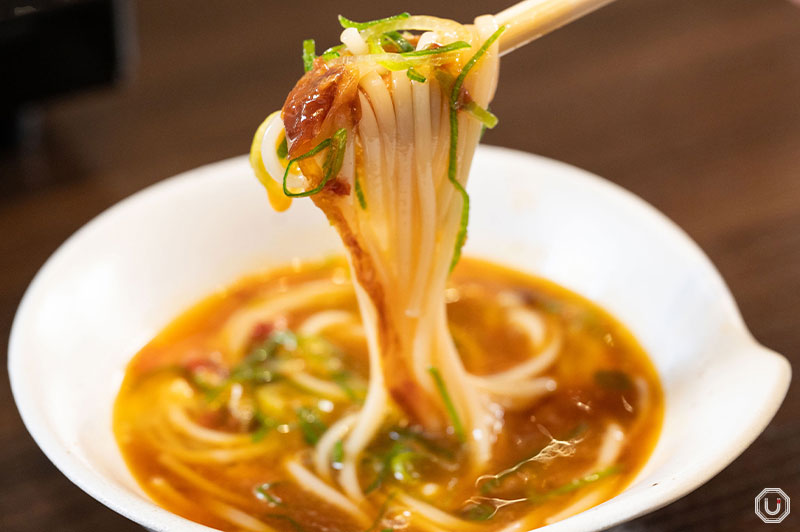
Eating noodles together with raw egg
The udon used in their jigoku-daki udon is Gotō udon made in the Gotō Islands. These noodles are kneaded with camellia oil, a local specialty, giving them an exceptionally smooth texture.
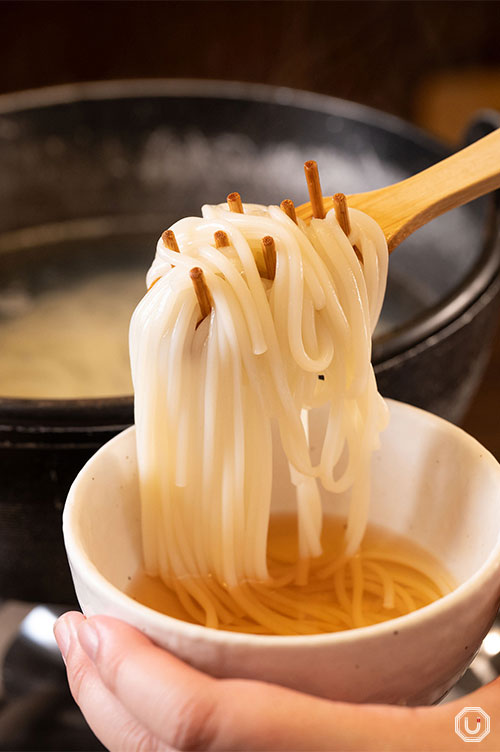
Not just seafood: exploring the unique meat dishes of Kamigotō
In Kamigotō, not only fishing but also boar hunting is popular. The restaurant serves a dish called “Seared Kamigotō Wild Boar” using locally caught boars.
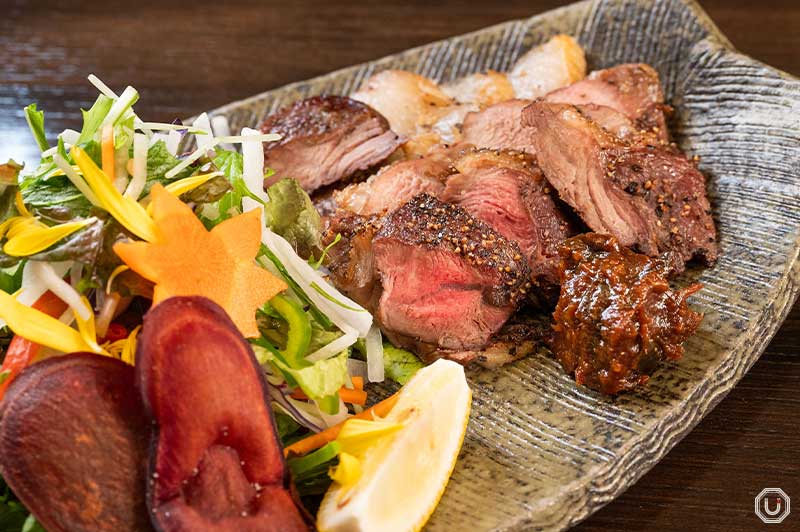
“上五島産 猪の炙り焼き,” Seared Kamigotō Wild Boar 1,480 JPY (tax included)
The wild boar meat used in this dish has a flavor similar to pork and a minimal gamey taste. Moreover, it offers a subtle sweetness and a non-greasy texture. The special green chili miso sauce enhances its sweetness and umami.
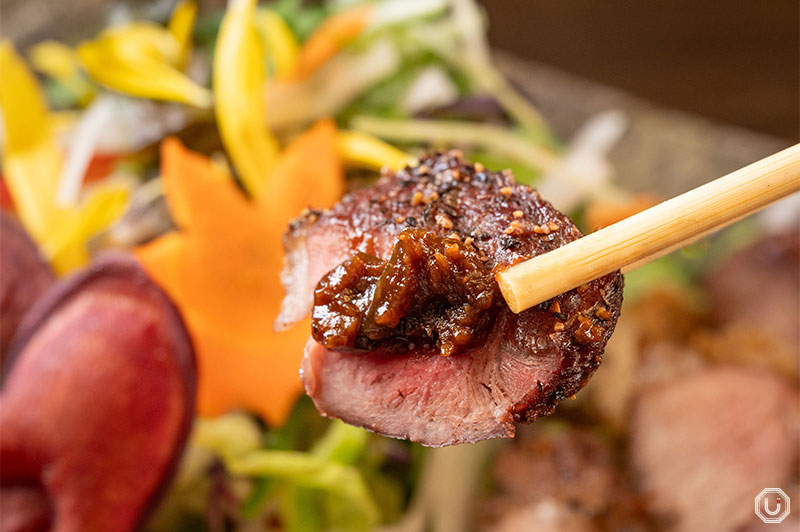
At Nihonrettōsakaba KAMIGOTO, you can enjoy a variety of dishes that are rare in Tokyo. It’s worth visiting for a unique culinary experience!
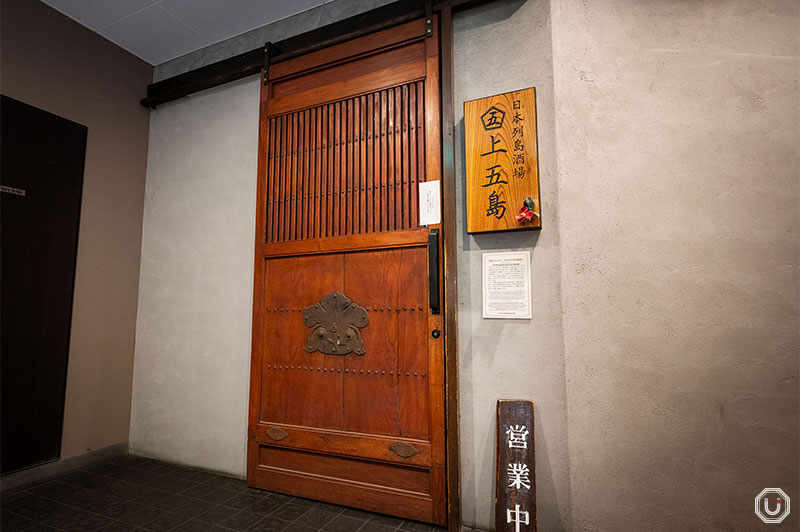
Information
| Store name | 日本列島酒場 上五島 Nihonrettōsakaba KAMIGOTO |
|---|---|
| Address | 37-35 Udagawa-chō, Shibuya-ku, Tokyo
|
| Access |
Shibuya Station(SBY)5-minute walk from Shibuya Station Exit A2
|
| Phone number | 03-6427-8067 |
| Reservations | Accepted Phone, Tabelog |
| Payment |
|
| Service charge/Table charge | Service charge (including otōshi) 450 JPY (tax included) Only at dinnertime |
| Hours | Mon-Sat. 11:30-14:30(last order 14:00), 17:30-23:00(last order: food 22:00 drinks 22:30) nat’l holidays 17:30-21:30(last order 21:00) |
| Closed | Sunday |
| Seating | 78 seats 8 counter seats, 46 table seats, 24 private dining room seats |
| Smoking | All seats are non-smoking |
| Official website | https://kiwa-group.co.jp/kamigoto/ |
| Other information |
|
※Menu contents, prices, store information, etc. are current as of November 2023.

